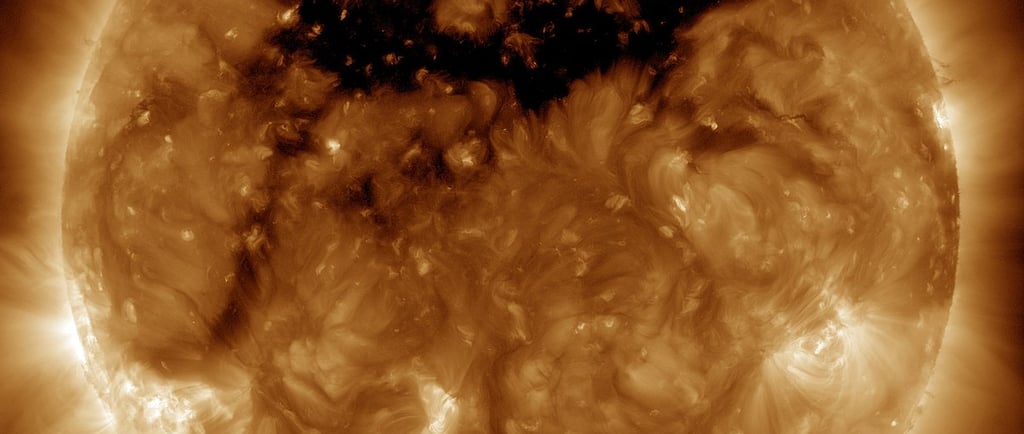The Colossal Coronal Holes on Solar Activity


Introduction to Coronal Holes
In recent astronomical observations, a colossal coronal hole approximately 800,000 kilometers wide has been identified in the sun's atmosphere. This phenomenon is significant due to its ability to influence solar activity and, consequently, terrestrial weather patterns. Coronal holes are characterized by a disruption in the sun's magnetic fields, allowing for faster solar winds to escape into space, which can have profound effects on Earth.
The Science Behind Coronal Holes
Coronal holes represent areas in the sun's corona where the magnetic field is weaker than in surrounding regions. This weakening creates an opening where solar winds can flow unabated. The solar winds emanating from these holes travel at speeds much greater than normal solar winds, often exceeding 800 kilometers per second. As the Earth orbits the sun, these high-speed solar winds can reach our planet within 18 hours post their emergence.
Effects of Solar Winds on Earth
The impact of the solar winds generated by a coronal hole can be multifaceted. When these winds collide with Earth’s magnetic field, they can enhance geomagnetic storms, which might lead to beautiful auroras in polar regions. However, disruptive consequences can also arise, affecting satellite operations, communications, and even power grids. Therefore, monitoring these solar phenomena is crucial for protecting our technological infrastructure.
In summary, understanding the nature of coronal holes and their associated solar winds is vital. As we delve deeper into solar dynamics, we can better prepare for and mitigate the potential impacts on Earth.
